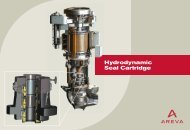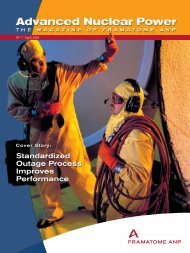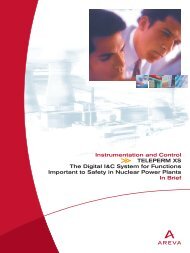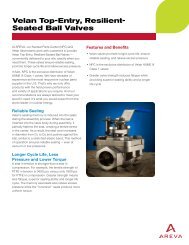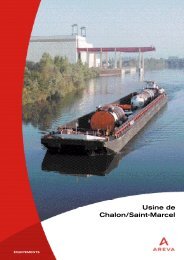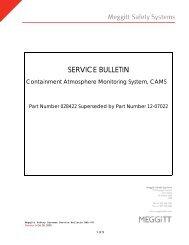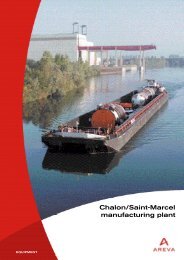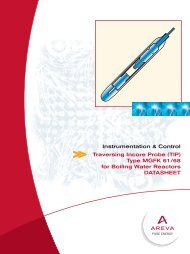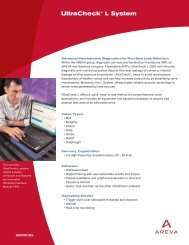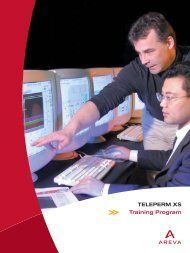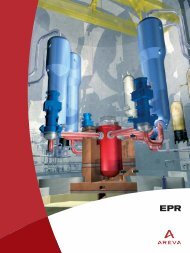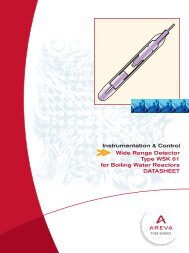Download - AREVA
Download - AREVA
Download - AREVA
- No tags were found...
You also want an ePaper? Increase the reach of your titles
YUMPU automatically turns print PDFs into web optimized ePapers that Google loves.
with the NRC and plant personnel toperfect the inspection technique on afull-scale mock-up of the reactor vesselbottom with its nozzles. This wouldhelp reduce dose and ensure that thejob could be performed safely andefficiently.To be sure that a definitive inspectionwould be performed, the team useda combination of visual, eddy currentand UT. The UT inspection requireddelivering probes from an inspectiontool, a type of tool designed to functionas an integrated part of a plant’s existingrefueling equipment. The probeswere inserted into the penetrationsfrom inside the reactor vessel to checkfor the existence and geometry ofany axial and circumferential flaws orcracks in the tubes, as well as thewelds joining the tubes to the vessel.The FindingsThe inspections, completed over aholiday weekend, revealed axial flawsin the tube walls of the two suspectpenetrations. At that time, nocircumferential flaws were detectedand the J-groove welds showed nocrack line indications. None of theother penetrations were affected.Repair and Final TestingOnce all the analysis work wascompleted, it was decided that thenozzles could be repaired with a provenprocess used by Framatome ANPon the RV head nozzles and othercomponents. A half nozzle repair, theprocess involved cutting out a portionof the nozzle and replacing it witha new Alloy 690 nozzle. At eachstep of the process, NDE inspectionswere performed to ensure adequatepreparation and good welds.The nozzles have been repaired anda stuck incore detector was removedfrom a third nozzle. All of this workwas completed on schedule andwithin budget.By using highly sophisticated, remotely controlledprobes, the bottom mounted nozzles could bethoroughly checked for any cracks in both thetubes and the welds.ConclusionEPRI and the Nuclear Energy Instituterecommended that all units performvisual inspections of the BMI nozzlesfrom underneath the RPV. The NRCissued a Bulletin (2003-02) in Augustdirected primarily to those PWRshaving bottom-mounted penetrations,requesting a description of the lowervessel penetration inspection program.The NRC advised that “the currentmethods of inspecting the RPV lowerheads may need to be supplementedwith additional measures to detectreactor coolant pressure boundaryleakage.”Because the industry is working hardtowards building new nuclear plants,regular inspections of the lowerportion of the reactor vessel might beprudent although it does not appearto be a major problem at present.Only time and the results of the testson the STP material will provide anindication of the potential scope ofthe problem. ■Advanced Nuclear Power N O 9 November 2003 13



